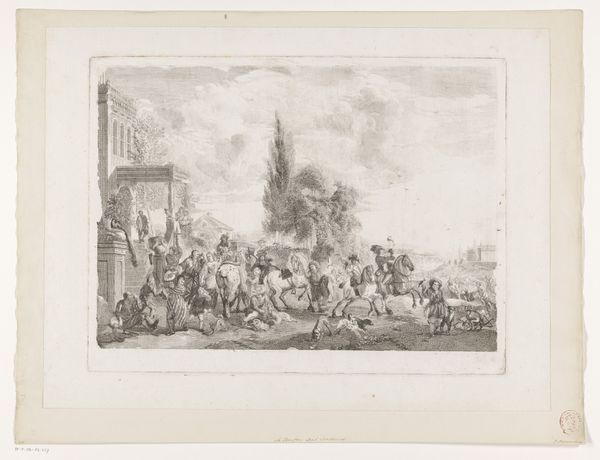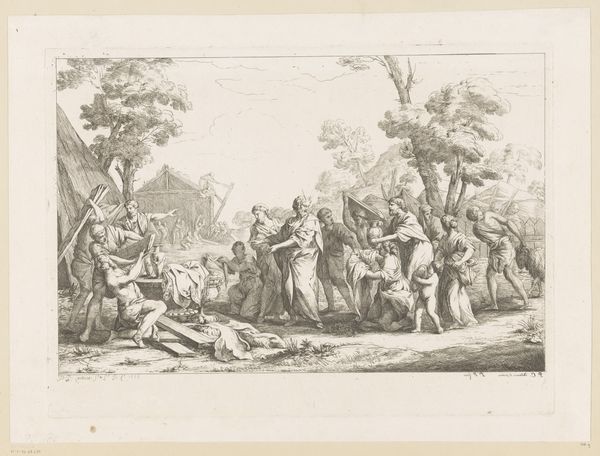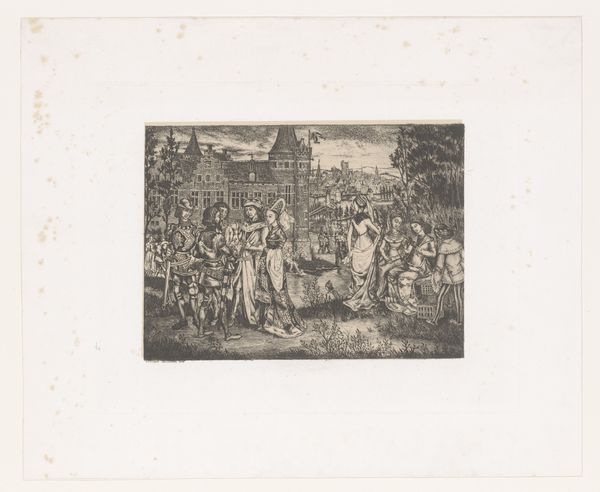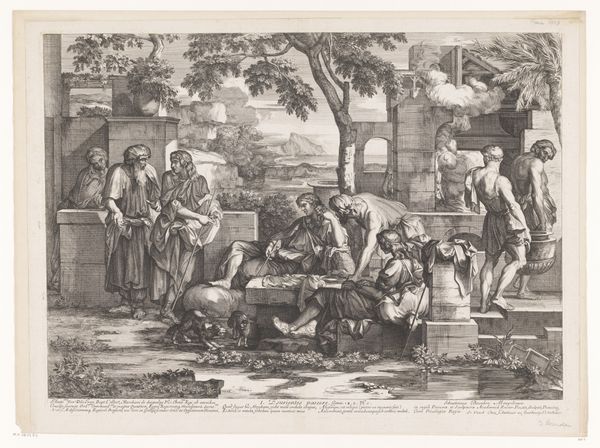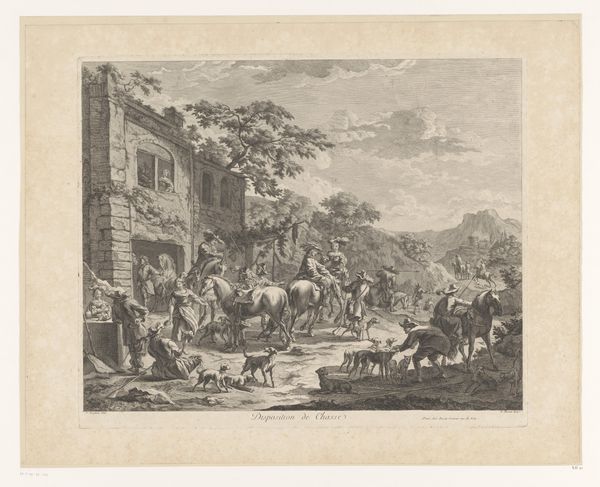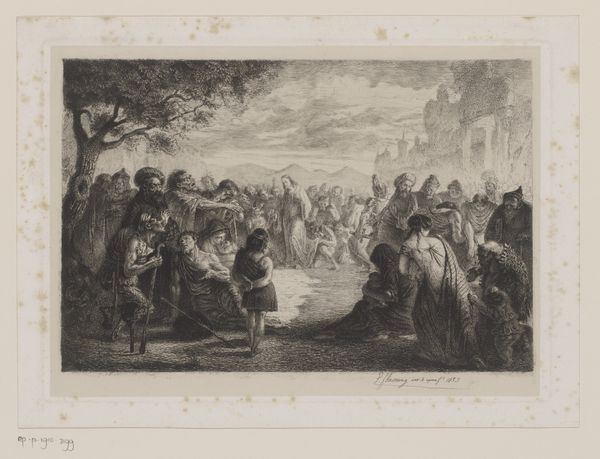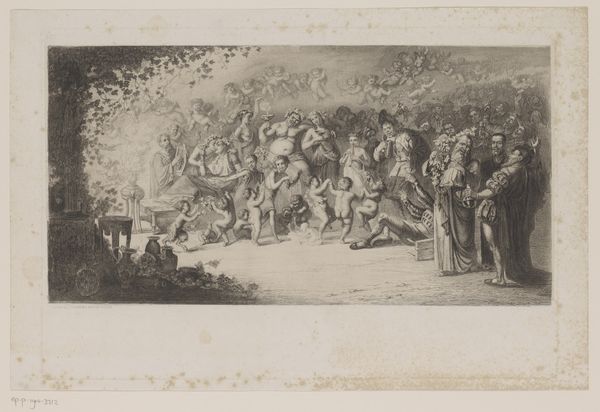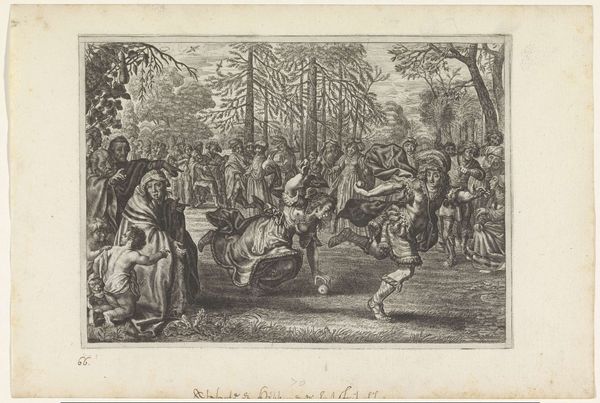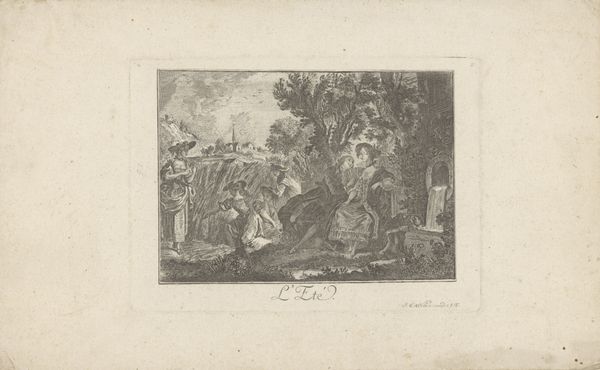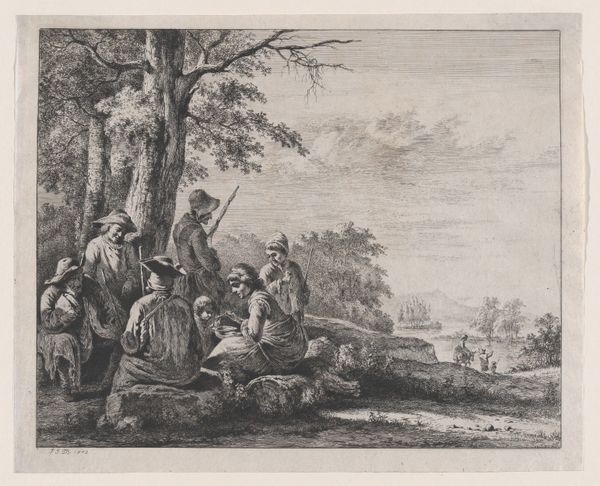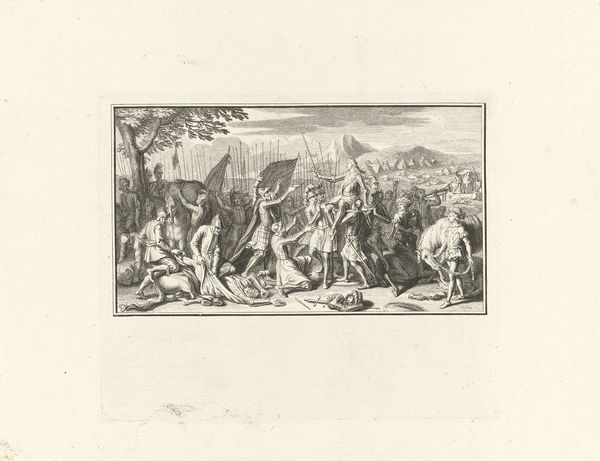
Dimensions: height 241 mm, width 299 mm
Copyright: Rijks Museum: Open Domain
Editor: So, this is Léopold Flameng's "Boerenkermis," created in 1855 using etching. It feels like a snapshot of community life, but there’s also this sense of hierarchy in where people are positioned and what they’re doing. How do you interpret this work through a more critical lens? Curator: It's intriguing you pick up on that hierarchy! Consider the historical context: mid-19th century Europe, marked by class divisions, rapid industrialization, and shifting social structures. How do you think Flameng's portrayal of a rural festival reflects or possibly critiques those power dynamics? Editor: I guess the musicians on the elevated platform and the observing figures positioned around the periphery seem to reinforce the class separation, almost as though they’re above the fray. Is this kind of depiction common for the time? Curator: Genre paintings, depicting scenes of everyday life, were popular, but often romanticized. Flameng's piece, though technically skilled, invites us to question this romantic vision. Think about whose perspective is privileged here? Who gets to participate, and who is relegated to the margins? Editor: It’s like he's showing us a constructed reality rather than the messy truth. The people dancing look carefree, but the composition itself feels…controlled. Curator: Precisely! This "control" is key. Whose stories are being told and, perhaps more importantly, whose stories are being omitted or silenced? Where are the women, and how are they presented? Consider their roles versus the roles of men, who are primarily centered stage, active and joyous in their dance. Editor: I see what you mean. It does feel like women are shown in traditional, passive roles. The mothers, observers...It is almost a demonstration of an established social structure rather than just an idyllic celebration. I'll certainly see this differently from now on! Curator: Exactly, it encourages a re-evaluation, and it goes to show that historical awareness enriches our reading of visual cues and assumptions of all art. Editor: Thanks! This makes the artwork even more engaging than before.
Comments
No comments
Be the first to comment and join the conversation on the ultimate creative platform.

